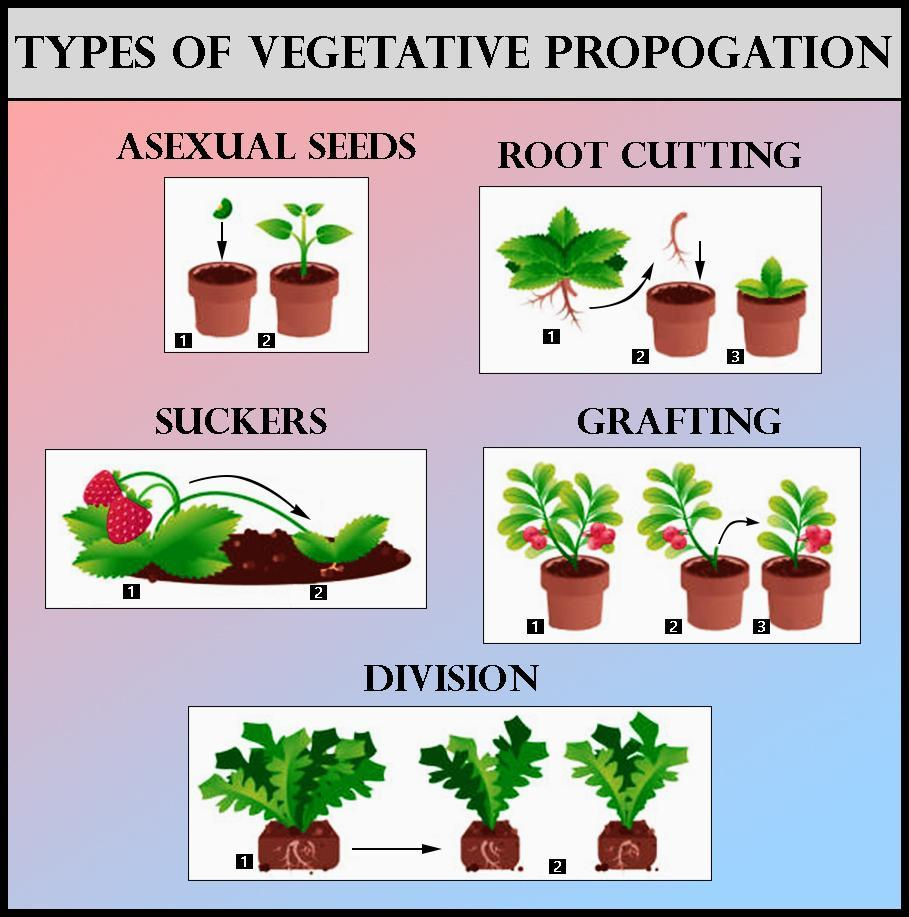
Write any two differences between sexual and asexual reproduction. “Vegetative reproduction is asexual reproduction.” Explain.
Answer
558k+ views
Hint: Cell division is similar to the process of reproduction for some organisms while some organisms require male and female gametes for their mode of reproduction. Offspring resulting out of asexual reproduction has a lot of similarity with their parents than the offspring which result in sexual reproduction
Complete answer:
Additional Information: Vegetative reproduction is a form of asexual reproduction that occurs and plants when a new plant is grown from a part of the fragment of another plant through a special reproductive structure. As no fusion of gametes takes place in vegetative reproduction hence vegetative reproduction is also considered asexual reproduction.

- Binary fission is a mode of Asexual reproduction which consists of the splitting of parent cell enter to daughter cells which are identical and are the same in size.
- When the parent organism tends to break into fragments and each of the fragment results in a new organism this process is known as fragmentation and is a process of asexual reproduction
- The formation of the bulb but on the parent body and the generation of a new organism from that bud is known to be as budding and is also a mode of asexual reproduction. After the bud has developed and matured fully they break away from the parent and is then a new single entity.
Note:
- The gamete cells which are produced during sexual reproduction are haploid and after the fusion of the two commits, the resulting organism or the newly formed zygote is diploid.
- In an asexual mode of reproduction mitosis occurs although in the sexual mode of reproduction meiosis occurs to achieve cell division.
Complete answer:
| Asexual reproduction | Sexual reproduction |
| Asexual reproduction generally involves the presence of a single parent and the resulting offspring is devoid of any kind of mutation and hence remains genetically identical to the parent. | The sexual mode of reproduction involves the presence of two parents and respective male and female reproductive cells which are also known as the gametes. |
| The asexual mode of reproduction is mainly seen in all of the prokaryotes and also some eukaryotes also reproduce similarly. | The union of the gametes is what produces the offspring and is not genetically identical to the parents due to the presence of a mutation or gene alterations. |
| Some of the methods by which asexual reproduction results in offsprings are fragmentation, budding, and binary fission. | Fertilization is the method of asexual reproduction. |
Additional Information: Vegetative reproduction is a form of asexual reproduction that occurs and plants when a new plant is grown from a part of the fragment of another plant through a special reproductive structure. As no fusion of gametes takes place in vegetative reproduction hence vegetative reproduction is also considered asexual reproduction.

- Binary fission is a mode of Asexual reproduction which consists of the splitting of parent cell enter to daughter cells which are identical and are the same in size.
- When the parent organism tends to break into fragments and each of the fragment results in a new organism this process is known as fragmentation and is a process of asexual reproduction
- The formation of the bulb but on the parent body and the generation of a new organism from that bud is known to be as budding and is also a mode of asexual reproduction. After the bud has developed and matured fully they break away from the parent and is then a new single entity.
Note:
- The gamete cells which are produced during sexual reproduction are haploid and after the fusion of the two commits, the resulting organism or the newly formed zygote is diploid.
- In an asexual mode of reproduction mitosis occurs although in the sexual mode of reproduction meiosis occurs to achieve cell division.
Recently Updated Pages
Master Class 12 Business Studies: Engaging Questions & Answers for Success

Master Class 12 Economics: Engaging Questions & Answers for Success

Master Class 12 English: Engaging Questions & Answers for Success

Master Class 12 Maths: Engaging Questions & Answers for Success

Master Class 12 Social Science: Engaging Questions & Answers for Success

Master Class 12 Chemistry: Engaging Questions & Answers for Success

Trending doubts
What is meant by exothermic and endothermic reactions class 11 chemistry CBSE

Which animal has three hearts class 11 biology CBSE

10 examples of friction in our daily life

One Metric ton is equal to kg A 10000 B 1000 C 100 class 11 physics CBSE

1 Quintal is equal to a 110 kg b 10 kg c 100kg d 1000 class 11 physics CBSE

Difference Between Prokaryotic Cells and Eukaryotic Cells




